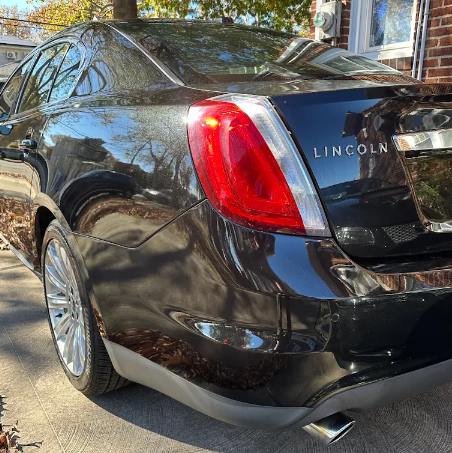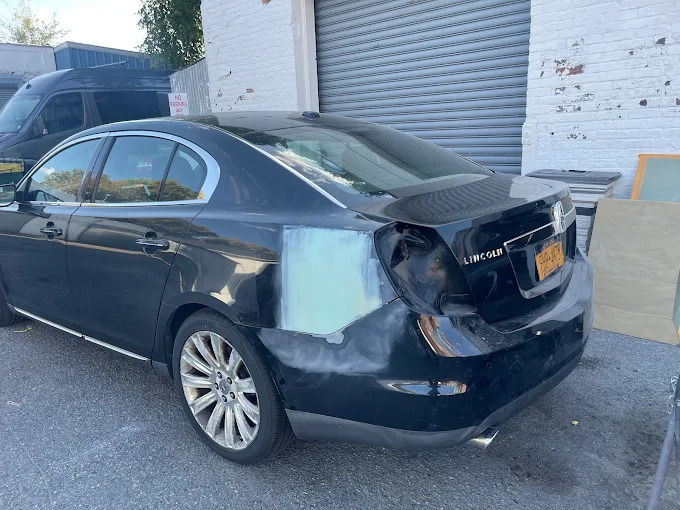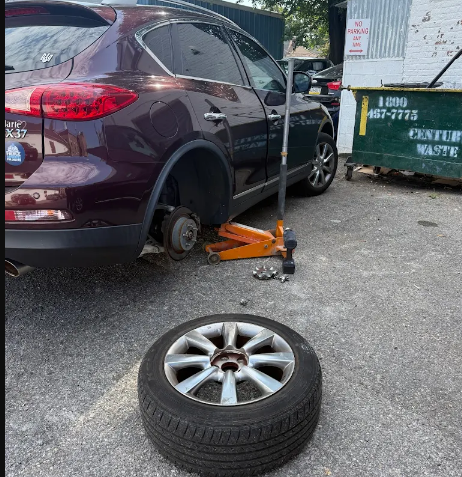Introduction: Why Auto Body Repair Matters
The importance of vehicle integrity
Auto body repair is not just about fixing dents—it’s about protecting the integrity and performance of your vehicle. When an accident occurs, multiple components of your car are affected, from mechanical systems to sensors. Professional auto body repair ensures every part, visible or hidden, is restored according to manufacturer standards, preserving both safety and efficiency.
Beyond appearances
Restoring your vehicle’s aesthetic appeal also safeguards its value and prevents corrosion. Even a small dent, if left untreated, can cause paint cracking and rusting over time. Professional repairs target these issues early, making the vehicle look new while preventing deterioration that could lead to expensive future damage.
Understanding Professional Auto Body Repair
What professional repair includes
A professional repair process covers everything from diagnostics and disassembly to resurfacing and refinishing. Certified technicians follow industry-standard procedures, ensuring that both the cosmetic and structural aspects of your car are properly addressed. This attention to detail guarantees your vehicle is road-ready and visually flawless.
The difference between DIY and expert work
While it might be tempting to try home repairs, untrained handling can make problems worse—especially with modern vehicles that rely on advanced sensors. Professionals use precise calibration equipment that ensures car systems such as airbags and collision-detection sensors remain accurate.

Damage Assessment and Initial Inspection
The inspection process
Certified technicians conduct a detailed evaluation that begins with a full visual and mechanical overview of the vehicle. Beyond noting surface scratches or dents, they inspect the internal frame alignment and test for any distortions caused by impact. This comprehensive process ensures that even subtle damage affecting performance or safety is identified early.
Detecting hidden structural issues
Modern vehicles feature lightweight yet intricate materials, making internal damage difficult to spot without advanced tools. Professionals use digital frame measuring systems and precision scanners to reveal misalignments or weakened areas invisible to the naked eye. Identifying these hidden issues is essential to restoring the vehicle’s structural integrity and safety standards.
Safety First: Restoring Structural Integrity
Frame and alignment restoration
After a collision, the frame of a vehicle often absorbs much of the impact, which can cause warping or misalignment. Skilled technicians use precision tools such as computerized laser measuring systems and hydraulic machinery to realign the frame to the manufacturer’s exact standards. This process not only restores the car’s structural integrity but also ensures proper handling, stability, and tire wear over time.
Protecting passengers
Safety doesn’t end with fixing what’s visible; internal systems like airbags and crumple zones must also be precisely recalibrated. When repairs meet or exceed factory guidelines, the vehicle can perform as originally engineered during high-impact situations. That means seatbelts, sensors, and safety mechanisms work together effectively to shield passengers in the event of another collision.
High-Quality Materials and OEM Parts
Using high-quality materials in vehicle repairs ensures long-lasting performance, safety, and reliability. When combined with OEM parts, these materials help your car maintain its original design and function. This commitment to quality not only enhances appearance but also preserves vehicle value over time.
Understanding OEM parts
Original Equipment Manufacturer (OEM) parts maintain the structural integrity and performance of your vehicle because they are designed by the same company that built it. Each component meets exact factory standards, ensuring proper fit and compatibility. These parts also undergo extensive testing for durability and safety to deliver consistent results under real-world driving conditions.
The problem with aftermarket alternatives
While aftermarket parts may seem like a cost-effective solution, they often compromise quality and precision. Variations in materials and manufacturing tolerances can lead to improper fitting, reduced safety, or faster deterioration. Over time, choosing non-OEM components can lower your vehicle’s resale value and increase the need for additional repairs.
Precision Tools and Modern Technology
The power of modern equipment
In 2025, auto repair shops are equipped with sophisticated robotics, digital measuring systems, and AI-powered analysis tools. These technologies work together to detect structural imperfections with micron-level precision, significantly reducing manual errors. As a result, technicians can complete repairs faster while maintaining factory-level accuracy and consistency.
ADAS calibration
Modern vehicles depend heavily on Advanced Driver Assistance Systems (ADAS) to enhance safety and driving comfort. After any structural or component repair, technicians must meticulously re-calibrate sensors like radar, cameras, and ultrasonic detectors to restore OEM specifications. Proper ADAS calibration ensures the vehicle’s safety features—such as collision avoidance and adaptive cruise control—function exactly as intended on the road.
Paint Matching and Refinishing Excellence
Accurate color matching
Modern auto body shops rely on advanced computerized spectrophotometers to analyze the precise shade and tone of vehicle paint. These systems ensure that the newly applied paint matches the original color under all lighting conditions. This precision delivers a flawless blend that restores the vehicle’s original factory finish and enhances its overall appearance.
Advanced refinishing techniques
Top refinishing professionals use eco-friendly waterborne and low-VOC paint systems designed to meet strict environmental standards. These coatings provide exceptional durability, with high resistance to fading, chipping, and corrosion. Combined with expert application and curing methods, they ensure a long-lasting, glossy finish that protects and beautifies the vehicle.

Skilled Technicians and Certification Standards
Professional training
Certified body technicians undergo continuous education through reputable programs such as ASE (Automotive Service Excellence) and I-CAR. This training ensures they stay current with evolving vehicle technologies, advanced materials, and modern fabrication methods. Their ongoing learning emphasizes precision, safety, and workmanship, guaranteeing that every repair meets manufacturer and industry standards.
Industry accreditation
Accredited repair shops adhere to strict guidelines set by manufacturers and environmental agencies. These accreditations validate that the facility uses authorized tools, original parts, and eco-friendly procedures. Customers can trust accredited shops to deliver high-quality results, maintain vehicle warranties, and operate with integrity and professionalism.
Warranty Coverage and Repair Guarantees
Repair warranties
Most professional body shops provide warranties that cover labor, paint, and all installed replacement parts, ensuring accountability for their work. These warranties typically last for a set period or mileage, depending on the shop’s policy and the nature of the repair. This coverage reassures customers that if an issue such as paint peeling or defective parts arises, the shop will correct it without additional cost.
Peace of mind for car owners
A repair backed by a warranty offers car owners confidence that they are protected even after leaving the shop. This assurance creates trust in the shop’s workmanship and reduces the stress of potential future repairs. It also reinforces the idea that the service provider stands behind the quality and durability of their work.
Insurance Claim Support and Documentation
Professional estimation services
Technicians provide comprehensive and accurate assessments of the damage or required repairs, using professional tools and expertise to create detailed cost estimates. They also gather photographic evidence and written documentation that align with insurance standards, helping validate the claim. This organized and credible information helps expedite claim approval and ensures that customers receive fair compensation.
Navigating insurance systems
Insurance claims can be complex, with multiple steps and extensive paperwork that often delay settlements. Professionals manage every stage of communication between the customer and the insurance provider, preventing misunderstandings and unnecessary delays. Their experience ensures that clients are not overcharged for repairs or underpaid for damages, ultimately streamlining the overall claims process.
Preserving Vehicle Value and Aesthetics
Long-term financial advantage
Professional repairs done by certified technicians not only restore a car’s appearance but also help retain its structural integrity and longevity. Vehicles repaired using OEM parts and proper paint-matching methods are often valued higher during resale or trade-in. Buyers and dealerships recognize the quality of these restorations, making them more willing to offer premium prices.
First impressions matter
A clean, damage-free exterior immediately communicates care and reliability to potential buyers. Scratches, dents, or faded paint can make even a well-maintained car appear neglected. Investing in quality exterior repairs ensures your vehicle looks appealing and trustworthy, enhancing your chances of selling it faster and at a better price.

Green and Sustainable Repair Practices
Eco-friendly coatings and materials
Modern auto body repair facilities increasingly rely on waterborne paints and energy-efficient curing systems to minimize harmful emissions and reduce energy use. These advanced coatings not only deliver high-quality finishes but also lower volatile organic compound (VOC) levels in the environment. As a result, repair shops become cleaner and safer spaces for technicians, promoting both environmental and occupational health.
Waste reduction initiatives
Sustainability in auto repair also means managing waste responsibly through recycling and material recovery programs. Many professional repair shops now repurpose scrap metal, properly dispose of leftover paint, and recycle solvents to limit landfill contributions. These consistent, small-scale efforts collectively build a greener industry and demonstrate a strong commitment to environmental stewardship.
Frequently Asked Questions
How long does professional auto body repair take?
The repair time depends on the damage’s severity, parts availability, shop workload, and insurance approval speed. Minor damage like small dents or bumper scratches typically takes two to five days to complete. Major collision repairs may require up to two or three weeks, especially if frame alignment or paint work is necessary.
Will my vehicle look the same after repairs?
When handled by certified professionals, your vehicle will look just as it did before the accident—or even better. Shops use computerized color-matching technology and precise refinishing techniques to ensure all panels are consistently restored.
Do I have to use my insurance company’s repair shop?
No, you have the right to choose any licensed auto body repair shop you prefer. While insurers may recommend certain providers, you’re not obligated to use them. In fact, independent certified shops can often provide better service and faster turnaround times.
Can frame damage be repaired?
Absolutely. Modern equipment allows technicians to restore even severely bent frames using laser-guided measurement tools and hydraulic straightening systems. Once complete, your car’s frame will meet or exceed its original factory specifications.
What kind of parts do auto body shops use?
Professional body shops typically use OEM (Original Equipment Manufacturer) parts to guarantee safety and performance. However, some insurance companies may ask for aftermarket or recycled components depending on your policy, so always confirm what’s being installed.
Why can’t repair times be estimated precisely?
It’s impossible to predict exact durations because hidden damage often reveals itself once teardown begins. Additionally, delayed insurance approvals or back-ordered parts can alter timelines. A trustworthy body shop will update you regularly as progress continues.
Conclusion
Professional auto body repair isn’t just about making your car look good—it’s about bringing it back to optimal safety, functionality, and value. Certified technicians rely on advanced tools, OEM parts, and strict repair standards to ensure every detail aligns with factory specifications.